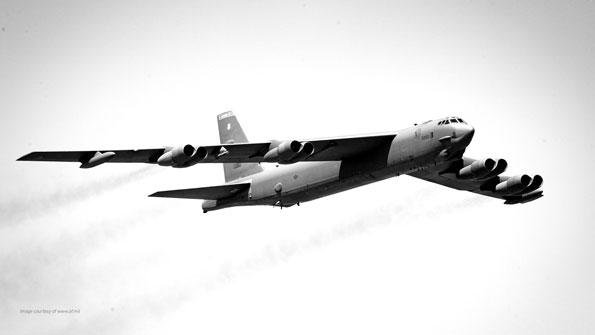B-52 Bomber Preparing To Fly Into 2050

Collins Aerospace has supplied its engine system components since the 1950's
When the United States Air Force (USAF) launched its legendary Boeing-built B-52 bomber in the 1950's, it’s likely no one envisioned that the aircraft would still be flying today – nor that the USAF would decide to continue its operations until at least the 2050's. But that’s the current plan for the 76 B-52H aircraft still in operation, the most recent of which were built in the 1960's.
The B-52 Stratofortress – a long-range, subsonic, jet-powered strategic bomber – has played a key role in deterring enemy aggression from the Cold War and Vietnam War to Desert Storm and the global war on terror. Now as the current fleet surpasses 50 years of service, the USAF recently decided to re-engine the B-52 as part of the Commercial Engine Replacement Program (CERP). Doing so will outfit these legendary aircraft with commercial off-the-shelf, in-production jet engines that will:
- extend the life of the aircraft
- reduce maintenance
- boost fuel efficiency
- increase range
- improve diagnostic equipment and
- reduce greenhouse gas emissions.
Not a bad birthday present for this tireless warbird.
Collins Aerospace has been part of the B-52 since the first version took flight in the 1950's. Rohr Aircraft Corporation, one of Collins’ heritage companies, produced parts of the plane’s propulsion system for what was then Boeing’s cutting-edge new bomber: the B-52. As the B-52 advanced from the first “A” model to the current “H” model that started flying in the 1960's, Collins Aerospace expanded its manufacturing innovations to modify the original parts to accommodate increased electrical power generation and engine thrust. Over the years, the company supplied not just the nacelles and struts, but also the fuel pod tanks and aft fuselage structure.
“We’ve been on every B-52 variant to date, producing 5,952 nacelles and 2,976 struts over the years,” said Marc Duvall, president, Aerostructures, Collins Aerospace. “We understand nacelles and how to efficiently and accurately manufacture them to the Boeing and Air Force standards and schedules. And beyond manufacturing, Collins has the service and repair network to keep these components flying as the B-52 mission extends toward its centennial celebration.”
It’s critical to the USAF that its suppliers provide the safest and most capable components available. Collins Aerospace’s proven designs and on-time delivery rates have demonstrated maximum fleet readiness for not only military aircraft, but also commercial and business jet aviation.
“We believe we have more experience in complex, highly engineered nacelle structures for aircraft than anyone else in the business. We’ve now been manufacturing these types of components for 80 years,” Duvall said. “More than 50 different programs are supported by our team, and our products have been certified with the rest of the aircraft on 18 new programs over the last 10 years. We’re proud that so many customers continue to place their trust in us.”
In recent years, Collins Aerospace was a supplier in two other major USAF re-engine programs: the Lockheed C-5 and Boeing KC-135. The company provided the new C-5M with struts for the replacement engine along with inlets, fan cowls and core cowls for the nacelle that were adapted from an existing program. For the Boeing KC-135, the company provided inlets and fan cowls for approximately 425 aircraft.





Comments